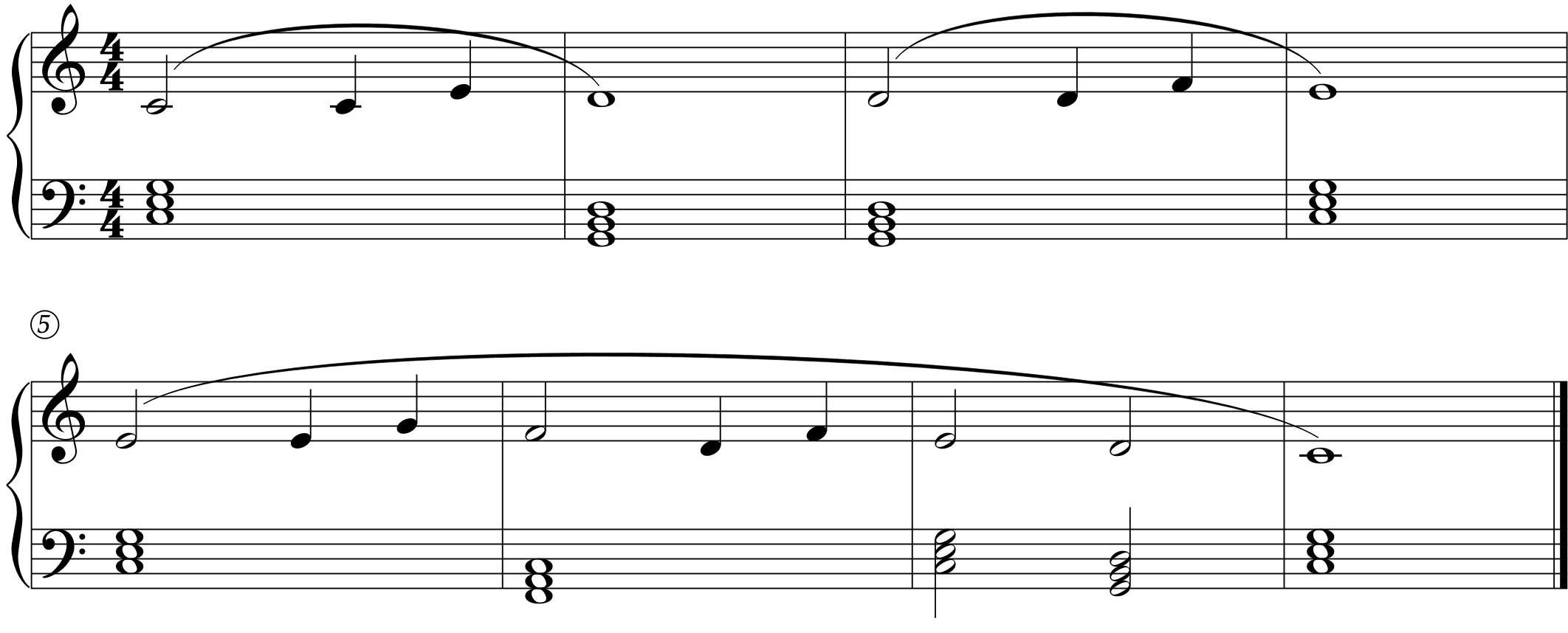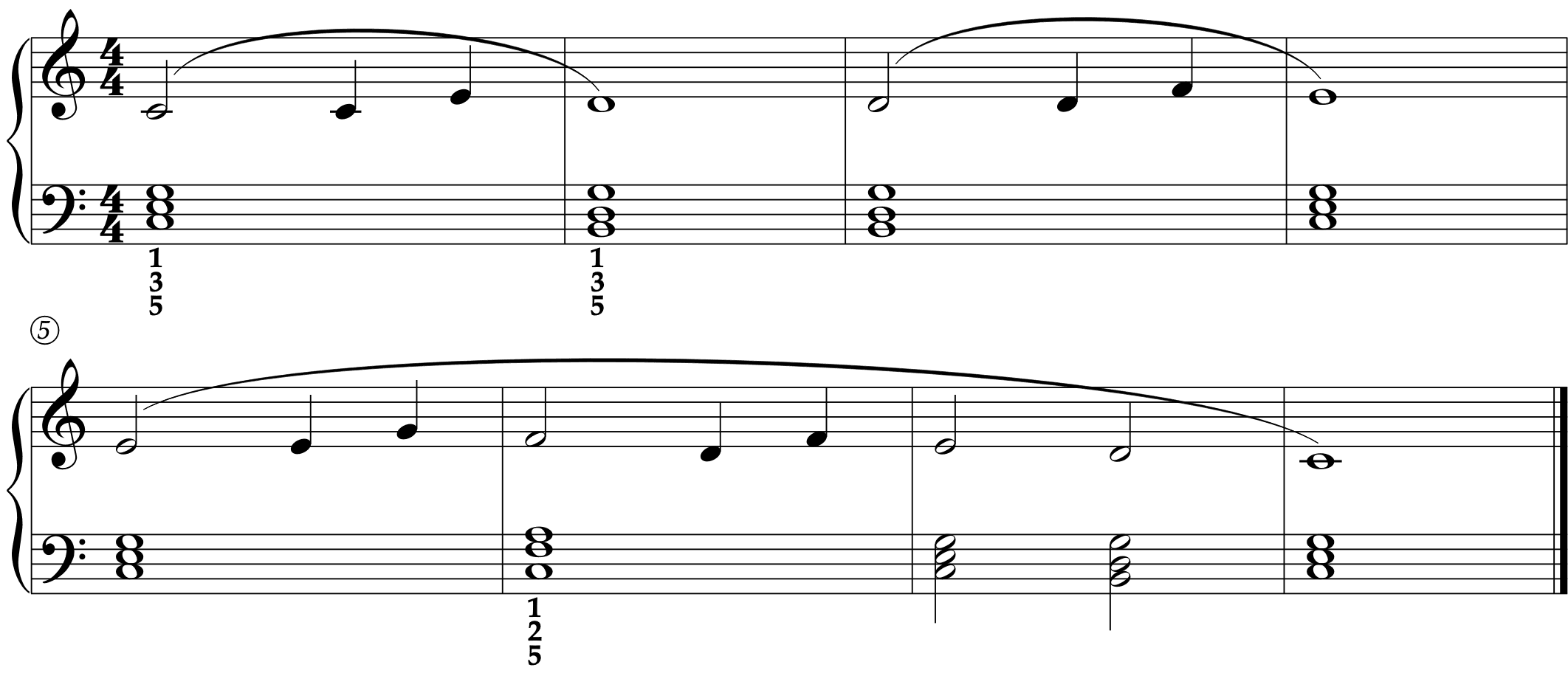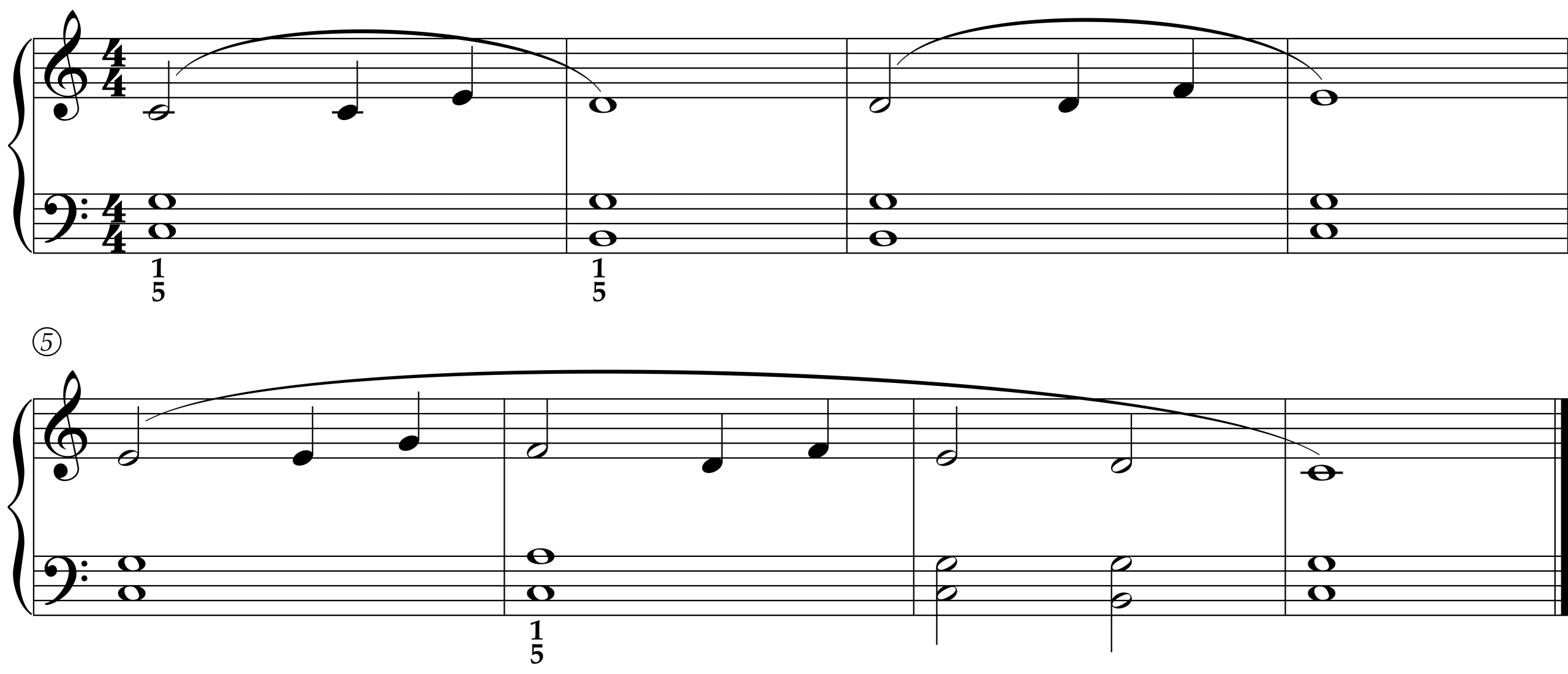27 Harmonization with Chords
For a fuller sound, melodies can be harmonized with triads. It’s possible to use root position triads in the left hand, but this requires the hand to change position frequently and eschews smooth voice leading. “God Is So Good” is harmonized below with root position triads. Label the Roman numerals beneath each chord.

“God Is So Good,” harmonized with root position triads
Closest Position Triads
Instead of root position triads, we will generally employ closest position triads, or the triad inversion that requires the least shifting. “God Is So Good” is harmonized below with closest position triads. Label the Roman numerals beneath each chord, and be sure to include the appropriate figures.

“God Is So Good,” harmonized with closest position triads
Most melodies we encounter in this course can be harmonized with I, IV, and V. This means we will mainly use three triad shapes:

Chord Shells
It takes time to become comfortable shifting between these chords in the left hand. As an intermediate step, you can master chord shells, or the outer interval of these chord shapes (either a fifth or a sixth). “God Is So Good” is harmonized with chord shells below.

“God Is So Good,” harmonized with chord shells
27.1
Practice moving between each chord shell. What interval does your thumb move when shifting from I to IV?


27.2
What interval does finger 5 move when shifting from I to V?


Knowing whether to shift a whole step or a half step will help you transpose this pattern to other keys.
Return to the Memorable Melodies and harmonize with them with chord shells.